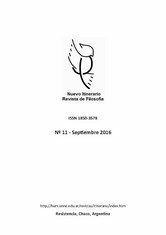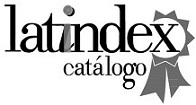The path of love in the Symposium: a deviated ascent to the divine
DOI:
https://doi.org/10.30972/nvt.1725708Keywords:
Plato, Symposium, Dualism, Love, BodyAbstract
Here I intend to show the nature of the path of love of wisdom in Plato’s Symposium. My starting point will be a reciprocal reading among all the voices in the symposium, moving away from the interpretation that prioritizes only the Socrates-Diotima speech. Then I will try to show that in the Symposium we find an anthropological model of unity between the body and the soul, with which the sensitive aspect is also considered useful for the philosophical search. I will support this thesis in a double way: I will show that (1) the scala amoris steps imply not only a vertical ascent but also a necessary deviation towards the horizontal character of immanence; and (2) that the vertical ascent does not imply a disregard for the previous steps but rather a detachment that frees the lover from the enslaving ties which bonds them to the particular objects of their love, be they corporeal or spiritual.References
ANNAS, J. (2003). Plato. A Very Short Introduction. Oxford University Press.
BAILLY, A. (1950). Dictionnaire Grec-Francais. Paris: Hachette.
BADIOU, A. (2003). «Filosofía y amor», en Condiciones. Siglo XXI. México, pp. 239-259.
BADIOU, A. (2012). Elogio del amor. Buenos Aires: Paidós.
BOERI, M.D. (2016). «Éros y synousía en el Simposio», en M. Tulli & M. Erler (Eds.), Plato in Symposium. Selected Papers from the Tenth Symposium Platonicum (pp. 362-370). Sankt Agustin: Akademia Verlag.
BRANDWOOD, L. (1976). A word index to Plato. Leeds: W.S. Maney.
BROADIE, S. (2001), Soul and Body in Plato and Descartes en Proceedings of the Aristotelian Society. New Series. Vol. 101, pp. 295-308.
BROCHARD, V. (1940). «Sobre el Banquete de Platón», en Estudios sobre Sócrates y Platón. Buenos Aires.
BURNET, I. (1899-1906). Platonis Opera, 5 vols., Oxford: Oxford University Press.
CASERTANO, G. (1997). Il (in) nome di Eros. Una lettura del discorso di Diotima nel Simposio platonico. Elenchos, XVIII, pp. 277-310.
CHANTRAINE, P. (1974). Dictionnaire étymologique de la langue grecque. Histoire des mots. Paris. (=DELG).
CHEN, L. C. H. (1983). «Knowledge of Beauty in Plato's Symposium», en The Classical Quarterly, New Series, Vol. 33, No. 1, pp. 66-74. Cambridge University Press.
CORNELLI, G. (2016). «A alma-camaleão e sua plasticidade: dualismos platônicos no Fédon», Archai 16: 127-138.
CORNFORD, F. M. (1974). «La doctrina del éros en el Banquete de Platón» (1974), en La filosofía no escrita. Barcelona: Editorial Ariel.
CORTÁZAR, J. (1962). Instrucciones para subir una escalera. Buenos Aires: Alfaguara.
DIXSAUT, M. (2001). Le naturel philosophe – essai sur les dialogues de Platon. Paris: Librairie Philosophique J. Vrin.
DOVER, K. (1980). Plato. Symposium, edition with introduction and commentary. Cambridge.
FERRARI, G. R. F. (1987). Listening to the Cicadas: A study of Plato´s Phaedrus. Cambridge. Cambridge University Press.
FIERRO, M. A. (2013). «Alma encarnada - cuerpo amante en el Fedón de Platón», en Benítez Grobet, L. & Velázquez Zaragoza, A. (eds.), en Platonismo y neoplatonismo en la modernidad filosófica. Mexico DF: 25-58.
FIERRO, M. A. «Loving and lovable bodies in Plato´s Symposium», XI Symposium Platonicum: The «Symposium». Proceedings II, International Plato Society – Universidad de Pisa, Departamento de Filología, Literatura y Lingüística, Pisa, Italia, 2013*: 258-262.
FIERRO, M. A. (2019). «Amor carnal, amor platónico en el Banquete», en Estud.filos N° 59, Universidad de Antioquia, pp. 189-219.
GIERSE, G. (1970). «Zur Komposition des platonischen Simposion», Gymnasium 77, pp. 49-76.
GUTHRIE, W. K. C. (1975). A History of Greek Philosophy. Cambridge.
HOFFMANN, E. (1947) Über Platons Symposioum. Heildelberg.
HOLMES, B. (2010). The symptom and the subject. The emergence of the physical body in Ancient Greece. Princeton and Oxford: Princeton University Press.
ISENBERG, M. W. (1940). The order of the discourses in Plato’s Symposioum. Chicago.
KONSTAN, D. (2012). El concepto de belleza en el mundo antiguo y su recepción en Occidente. Nova Tellus, 30, pp. 133-147. ISSN: 0185-3058. Disponible en: https://www.redalyc.org/articulo.oa?id=591/59128312005.
LIDDELL, H. G., Scott, R., Jones, H. S., & McKenzie, R. (1940). A Greek-English Lexicon. Oxford: Clarendon Press. (= LSJ)
LUDUEÑA, E. (2015). Platón, Banquete. Traducción, introducción y notas. Buenos Aires: Colihue.
MÁRSICO, C. (2009). Platón, Banquete. Buenos Aires: Miluno. ROWE, C. J. (1998). Plato. Symposium, edited with an Introduction, Translation and Commentary. Oxford: Aris & Phillips Classical Texts.
NUSSBAUM, M. C. (2001) [1986]. The Fragility of Goodness. Luck and Ethics in Greek Tragedy and Philosophy. Cambridge: Cambridge University Press.
PEIXOTO, M. C. D. (2012) «Corpo, anima, visibile, invisibile nel Simposio platonico», Marino, S. (trad.), en Borges de Araujo, Jr. y Cornelli, G., Il Simposio di Platone: un banchetto di interpretazioni. Napoli: Lofredo Editore, pp. 159-179.
REALE, G. (2010), «La concepción del hombre» en Reale, G. y Antiseri, D., Historia del Pensamiento Filosófico y Científico. Tomo I. Antigüedad y Edad Media. Barcelona: Herder.
ROBIN, L. (1908). La théorie platonicienne de l’amour. París: Félix Alcan Éditeur.
ROSEN, S. (1968). Plato’s Symposioum. Londres: New Haven.
ROWE, C. J. (1998). Plato. Symposium, edited with an Introduction, Translation and Commentary. Oxford: Aris & Phillips Classical Texts.
SOARES, L. (2012). «La erótica platónica en perspectiva. Notas para una lectura del Banquete - Estudio preliminar», en Mársico, C. (trad.), Platón, Banquete, Miluno, Buenos Aires, pp. 13-128.
VELÁZQUEZ, O. «En torno a "súbitamente" en el Banquete de Platón», en Revista Chilena de Literatura, No. 27/28 (Apr. - Nov., 1986), pp. 67-76.
VERNANT, J. -P. (2001). El individuo, la muerte y el amor en la Antigua Grecia. Barcelona: Paidós.
VIGO, A. (2009). Platón. Fedón. Buenos Aires: Colihue.
Downloads
Published
How to Cite
Issue
Section
License
Les autores ceden a Nuevo Itinerario los derechos de publicidad de sus trabajos, toda vez que hayan sido admitidos como parte de alguno de sus números. Ello no obstante, les autores retienen los derechos de propiedad intelectual y responsabilidad ética así como la posibilidad de dar difusión propia por los medios que consideren.












51.jpg)

